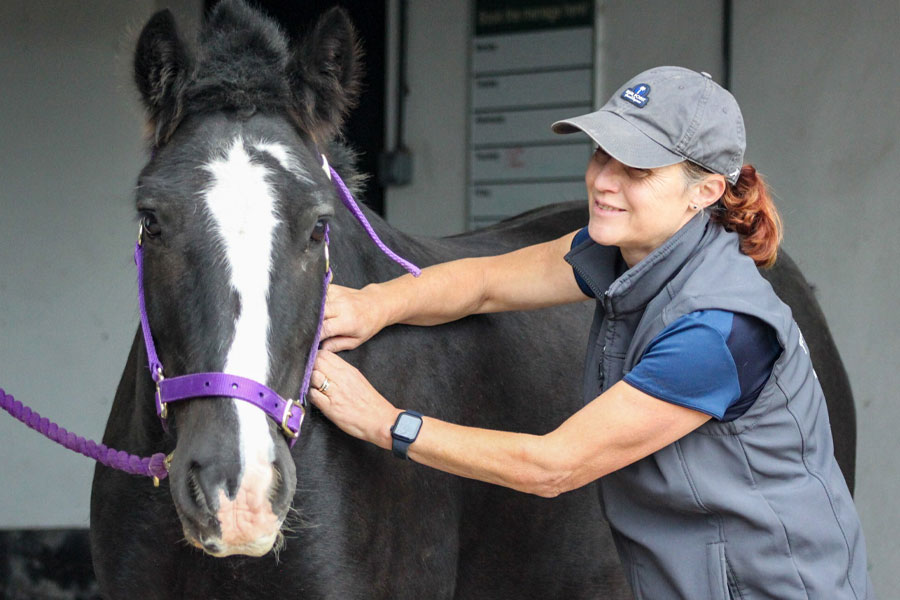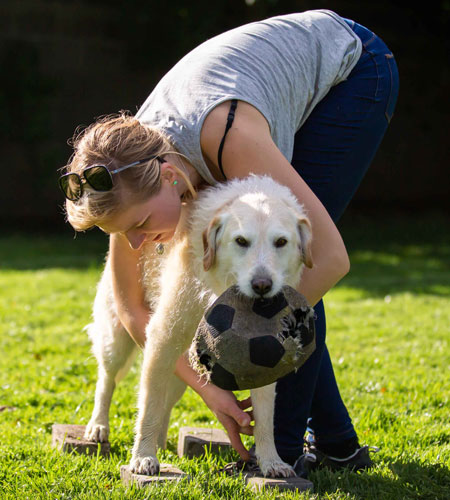Massage
Animal massage therapy and stretching techniques can enable animals to perform to their full potential
Massage for humans has been documented since 200BC, when it was mentioned in ancient medical manuscripts from China, Persia and Egypt. In the early nineteenth century, Per Henrik Ling from Sweden, was responsible for developing the soft tissue techniques and names of movements that are considered the foundation of all massage modalities, such as effleurage, petrissage, friction, tapotement and vibration. It was soon realised that massage could heal injuries, relieve pain, reduce stress and enable a deep relaxation.
Today, massage therapy is a highly respected form of holistic healing and practiced across the world. Not only has it developed in the human world, it has also been realised as a valuable profession within the animal world.
Various massage and stretching techniques can be applied, enabling the animal to not only perform to their full potential, but for those who may be having a quieter life, it can keep them supple, comfortable and using themselves correctly in their golden years.
Massage is proven to:
- Increase and improve circulation
- Enhance muscle tone
- Relax muscle spasm
- Prevent and relieve adhesions
- Increase the range of movement
Canine massage
Canine Massage has many benefits. It can be used to rehabilitate your dog from injury, relieve discomfort, stiffness, lameness and help restore mobility. The aim is to promote the relaxation of tight, inflexible muscles, to improve their elasticity and range of movement (ROM). In addition, massage can help dogs to cope with orthopedic issues, such as arthritis, hip dysplasia, and spondylosis.
Canine Massage is a clinical therapy used to support and resolve issues in your dog’s muscular system that may be having a detrimental effect on their mobility, mood, and quality of life. The muscular system can house a vast range of painful issues and injuries and as dogs are not able to tell us they are in pain, these issues can go overlooked. Massage is a unique, strong, manipulative treatment for dogs and works by releasing tight, sore muscles, removing debilitating trigger points (or knots) that can cause referred pain, and helping to break down restrictive scar tissue.
Alongside its natural benefits, massage therapy can also work well alongside pharmaceutical pain relief enabling the therapist to work deeper and ask more of the muscles and joints with the support of anti-inflammatory medication. Massage should only be carried out by a skilled, trained, and insured professional who is able to locate and treat which muscle groups are responsible for the pain. It is also the responsibility of the therapist to refer findings back to the treating veterinary surgeon, especially should there be no improvement or further issues are discovered during or as a result of treatment.
Equine sports massage
Massage therapy is the manual manipulation of soft body tissues, muscle, connective tissue, tendons, and ligaments to enhance health and well-being.
It involves manually working on the horse’s body with pressure, structured or unstructured, stationary, moving, tension, motion, or vibration.
Massage therapists work to reduce pain, improve movement and restore normal control in animals as a result of musculoskeletal conditions or as part of a maintenance fitness/general health programme
In competitive or working animals, massage may be used as an intrinsic part of the development of the animal athlete. Helping to minimise the risk of injury and optimise performance and potential.
By analysing and assessing posture, movement, and skeletal function, Equine Massage Therapists can help develop holistic treatment plans alongside veterinary treatment. These can often be accompanied by exercise and rehabilitation programs.
- Assisting in promoting both vascular and lymphatic circulation
- Improving joint mobility
- Assisting flexibility and agility
- Reducing the formation of scar tissue
- Stimulating the parasympathetic nervous system
Veterinary permission
Massage has become an established treatment option complementing veterinary care for animals.
An owner must always consult their Veterinary Surgeon before seeking massage treatment. Healthy animals do not require a veterinary referral for maintenance care, however, any animal, including healthy ones, must be registered with a veterinary surgeon, and referred to a vet at the first indication of any symptoms, or signs, that may suggest underlying health issues.
Only Veterinary Surgeons are legally able to diagnose and investigate any clinical problems.
What to expect from your therapist?
Anyone treating your horse should hold a recognised qualification and full insurance. It is there responsibility to contact your vet prior to treatment and in some cases, following treatment, findings should be reported back to the treating vet.
There will be slight variations in how each therapist works, however, you should expect them to obtain a history, request to see your horse move, treat in an appropriate manor and provide you with advice and exercises to carry out in between treatments.








